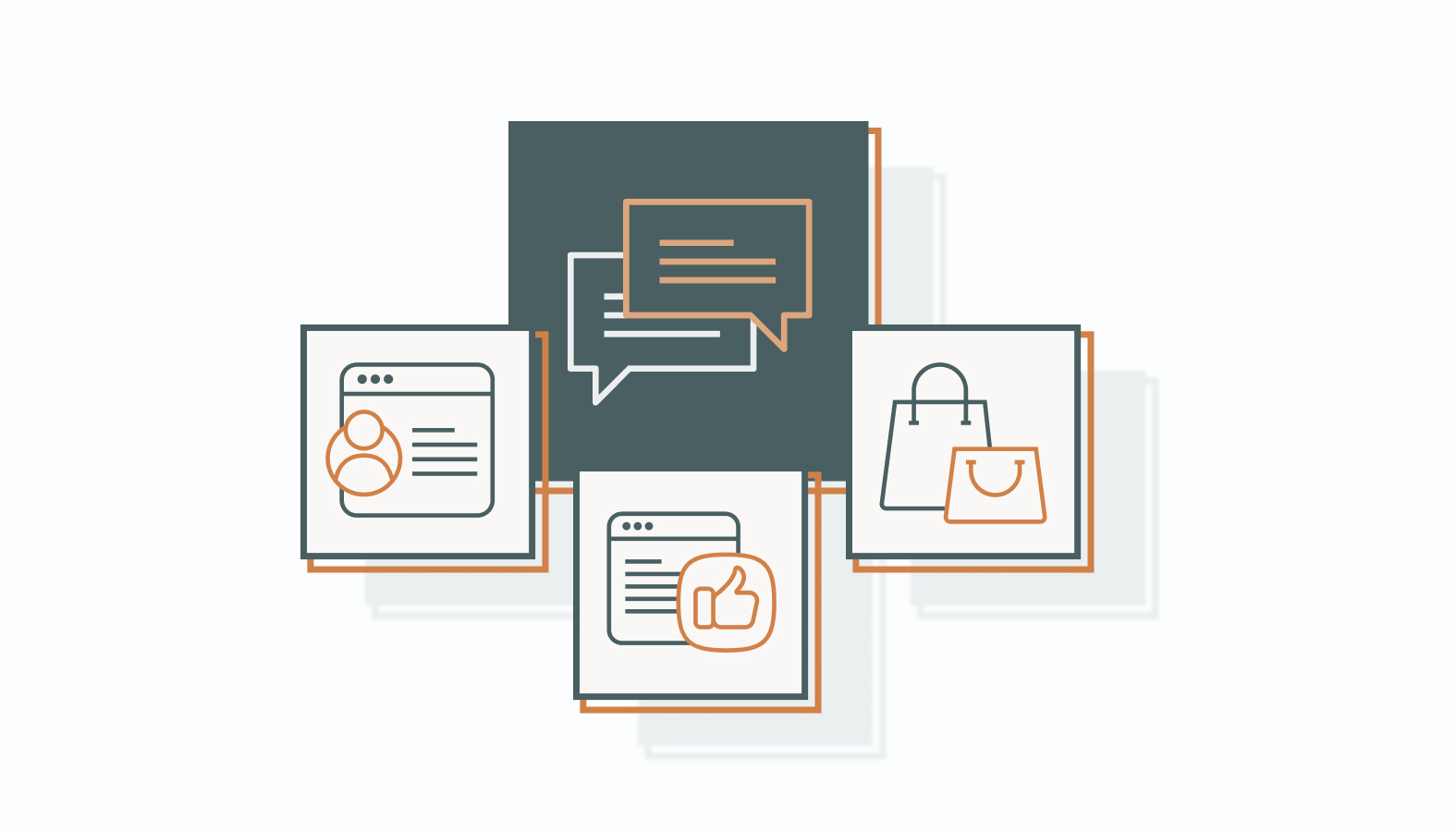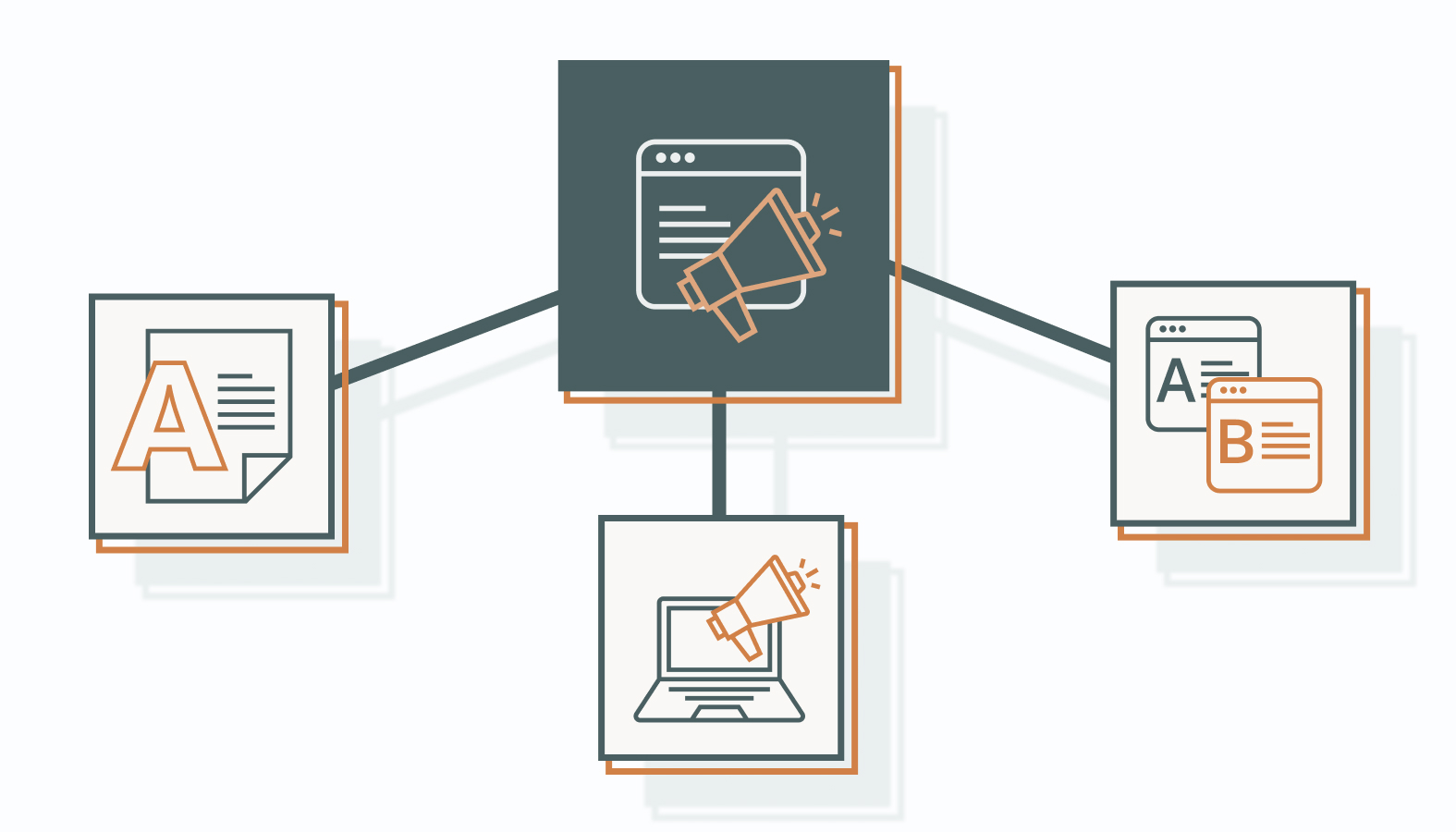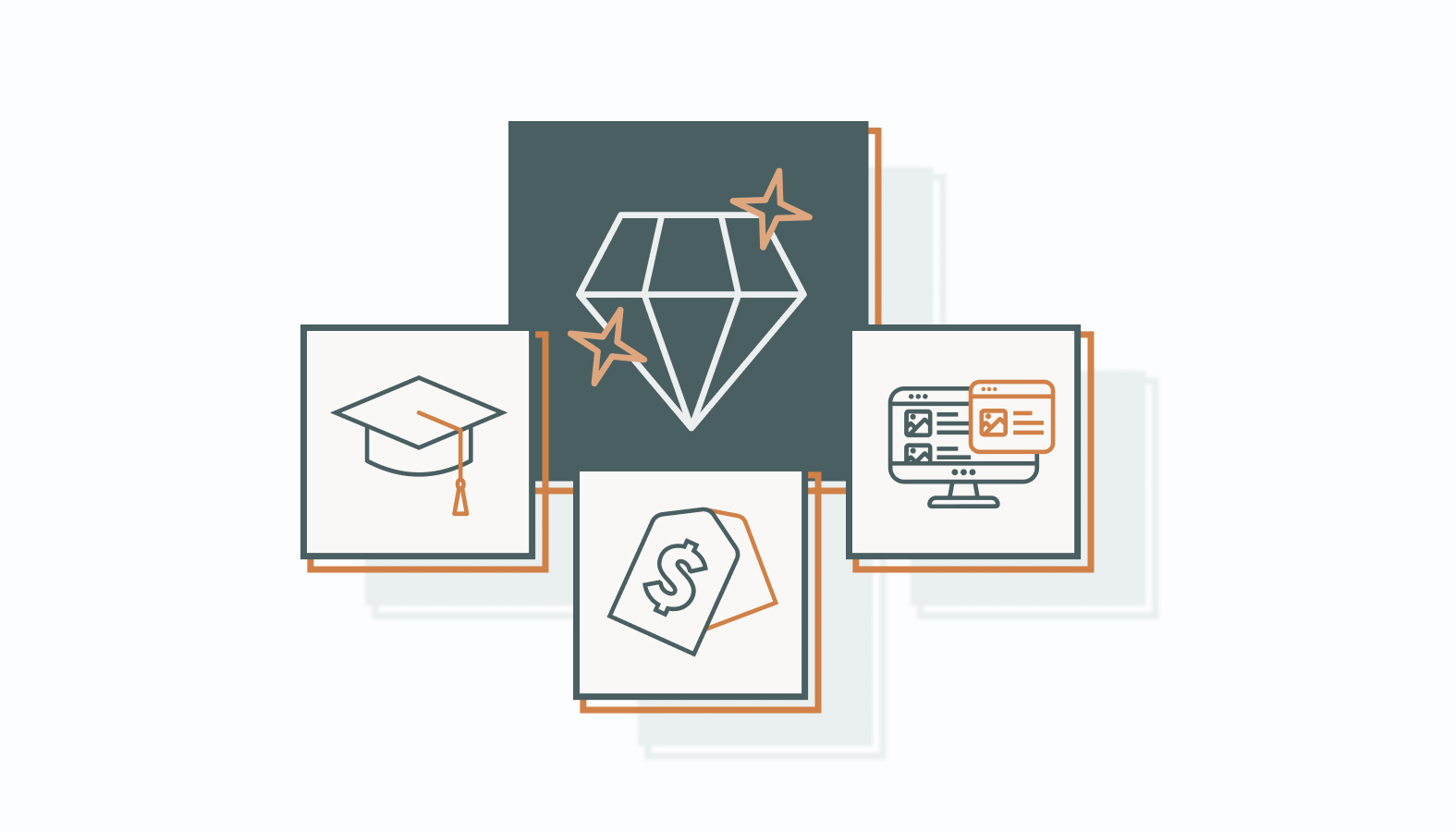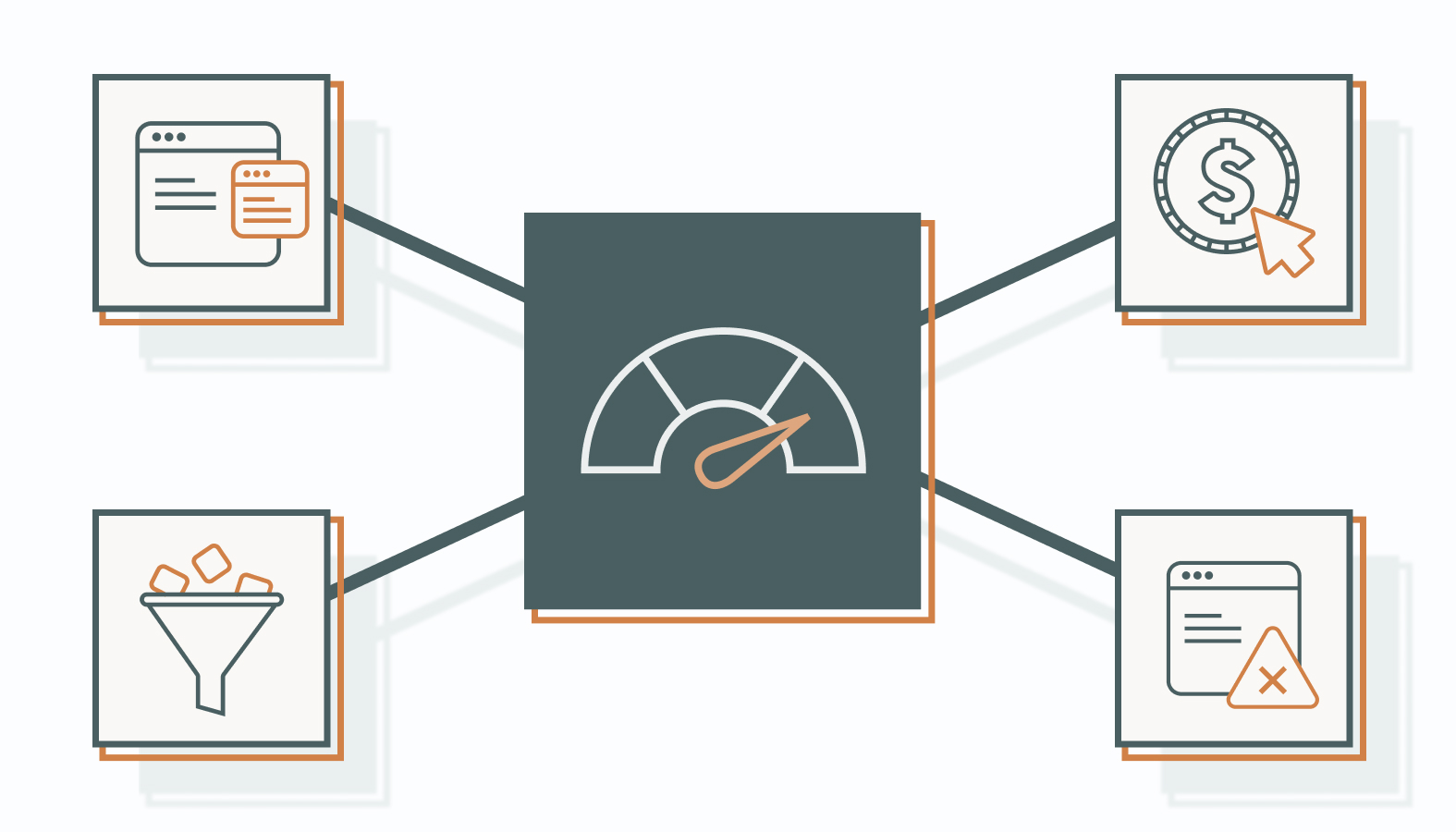Email marketing remains a powerful tool for businesses looking to engage their audience, drive conversions, and maximize ROI. But as digital trends change, email strategies must adapt to stay effective.
This article uncovers 15 proven email marketing strategies to elevate your efforts and make your messages stand out in crowded inboxes. From personalizing emails and choosing the best send times to using automation and evaluating campaign performance, these email marketing strategies are designed to boost engagement and improve overall campaign success.
Stay ahead of the curve with these methods and watch as your email marketing reach new heights.
1. Clean Your Email List Regularly
Removing inactive subscribers, inaccurate addresses, and duplicates improves deliverability and engagement. A clean list means your emails are more likely to land in inboxes, not spam folders, boosting your campaign’s overall performance.
Identify and Remove Inactive Subscribers
Inactive subscribers who haven’t opened or clicked your emails in 6–12 months can hurt your email list’s performance.
Use tools like Mailchimp or HubSpot to find these contacts. Try re-engaging them with catchy subject lines or special offers like a “We Miss You!” email with a discount. If they still don’t respond, it’s best to remove them to improve your open and click-through rates.
Validate Email Addresses for Accuracy
Accurate email addresses are essential for maintaining a good sender reputation. Tools like NeverBounce or ZeroBounce can check email validity and catch typos, such as “gamil.com” instead of “gmail.com,” to correct them quickly.
Remove addresses that cause hard bounces, as undeliverable emails can harm your sender reputation and reduce deliverability.
Eliminate Duplicate Entries
Duplicate entries can skew your metrics and increase marketing costs unnecessarily. They can lead to duplicate mailing and inaccurate reports.
Use your email platform’s deduplication tool to find and remove duplicates. This improves data accuracy and makes your campaigns more cost-effective by avoiding unnecessary emails to the same address. It’s a simple action with big benefits for your email marketing.
2. Personalize Your Messages
Personalized emails can boost ROI and engagement by meeting consumers’ expectations. They show that you understand your audience’s needs, resulting in higher open rates, more conversions, and stronger customer loyalty.
Use Subscriber Names
Using a subscriber’s name makes the email feel more personal and valued, strengthening your connection with your audience. This personal touch can improve engagement and increase the likelihood of action.
Email platforms like Mailchimp or ConvertKit let you easily add names using merge tags so that each email feels personalized automatically.
Tailor Content to Preferences
Segment your audience based on preferences and behaviors to deliver relevant content. Collect data through sign-up forms and track actions like purchases or page visits.
Tools like HubSpot or ActiveCampaign help automate this process, creating dynamic content for each segment. Regularly update preferences to align content with subscriber interests and maintain high engagement.
Use Purchase History for Relevant Offers
Using purchase history data allows you to send targeted product recommendations and offers. This strategy encourages repeat purchases and boosts customer retention by showing you understand their needs.
Platforms like Klaviyo can integrate purchase history into your campaigns, ensuring timely and relevant offers, which strengthens customer relationships and increases sales.
3. Segment Your Subscribers
Segmenting your subscribers into smaller groups allows you to send personalized messages that match each group’s unique needs and traits. This targeted approach increases engagement and makes your campaigns more effective by ensuring your content is relevant to your audience.
Demographic Segmentation
Group subscribers by attributes like age, gender, location, and income to create more relevant content. Use sign-up forms and surveys to gather data and CRM systems like Salesforce or Zoho CRM to keep it updated and organized for effective segment management.
Behavioral Segmentation
Track subscriber actions like email opens, clicks, and site visits to tailor campaigns. Use this data to send personalized content based on their interests.
Platforms like ActiveCampaign or HubSpot help collect and analyze this information for precise messaging.
Psychographic Segmentation
Analyze values, lifestyle, and interests to create emotionally engaging content. Use surveys and social media interactions to gather data and update preferences through your email platform. This understanding helps craft messages that personally resonate, boosting engagement and loyalty.
4. Make Your Emails Mobile-Friendly
Making your emails mobile-friendly is essential, as many users access emails on their smartphones and tablets. Optimizing for mobile improves engagement and conversion rates by providing a smooth user experience that encourages interaction.
Implement Responsive Design
Ensure your emails look good on any device using responsive design with flexible layouts and scalable images. Use mobile-optimized templates from platforms like Mailchimp and Constant Contact. Test designs on different devices to maintain consistency and functionality.
Keep It Short and Sweet
Make mobile emails brief and direct for easy reading on small screens. Use concise subject lines to grab attention. Deliver key information early with clear language to keep readers engaged and prevent them from swiping away.
Use Clear and Compelling CTAs
Make sure call-to-action (CTA) buttons in mobile emails are clear, easy to tap, and distinct. Place them prominently and use contrasting colors with ample whitespace for visibility. This improves user experience and boosts conversion rates by guiding users smoothly to your goal.
5. Optimize Your CTAs
Effective CTA buttons boost engagement and conversions. A well-crafted CTA guides subscribers on what to do next, improving your email marketing success and campaign results.
Use Action-Oriented Language
Action-oriented language in your CTAs helps subscribers understand exactly what to do next. Use strong, direct verbs like “Sign Up Now,” “Get Started,” or “Learn More” to motivate action.
Adding urgency or exclusivity in your CTAs can further spur action. Words like “Limited Time Offer” or “Exclusive Access” encourage subscribers to act quickly, leveraging the fear of missing out (FOMO) to increase conversion rates.
Maximize Placement and Visibility
To ensure your CTAs capture attention and prompt action, strategic placement is key. Place CTAs in high-visibility locations within your email, ideally above the fold, so they’re immediately seen without scrolling. In longer emails, add CTAs in multiple places.
Design is also crucial in making CTAs stand out. Use contrasting colors to make them pop against the email background, bold fonts for emphasis, and ample whitespace around the button to draw focus.
Perform A/B Testing
A/B testing different versions of your CTAs helps determine the most effective approach. Test various elements like wording, color, size, and placement to see which combinations drive the highest engagement.
Analyze the A/B test results by looking at metrics such as click-through rates and conversion rates. These insights will help you make data-driven improvements and ensure your CTAs perform at their best and deliver the desired results.
6. Perfect Your Emails with Testing
Testing is vital in email marketing to identify what works best for your audience. By experimenting with various elements of your emails, you can get insights for higher engagement and more effective campaigns.
Experiment With Subject Lines
Subject lines are your first impression, so test different ones to maximize open rates. Vary elements such as personalization, length, and emojis to see which combinations entice recipients to open your emails.
Refine Your Body Content
The body of your email is where you deliver value, so test different versions for effectiveness. Experiment with content length, tone, and style to find the right balance that engages readers and aligns with your brand’s voice.
Play With Design Layouts
The layout of your emails impacts readability and engagement. Test different layouts to identify which designs lead to better user experiences. Focus on visual elements like images, fonts, and color schemes.
Optimize Your CTA Buttons
Your CTA buttons should be magnets for clicks, so test their design by experimenting with color, size, and shape to see which combinations draw the most attention and encourage action.
Also, try different text and placements. This ensures your CTAs effectively guide subscribers to desired actions, boosting conversions and campaign success.
7. Automate Email Campaigns When Possible
Automating your email campaigns allows you to connect with your audience at the right times without manual effort. It ensures timely and relevant interactions, boosting engagement and efficiency across your campaigns.
Set Up a Welcome Series
A well-crafted welcome series makes a strong first impression on new subscribers. It introduces your brand, sets expectations, and builds trust right from the start.
Start with a friendly greeting, explain what to expect from your emails, and offer incentives like discounts to engage them.
Automate Abandoned Cart Reminders
Abandoned cart reminders are a powerful tool for recovering potential lost sales. Use automated messages to remind subscribers of incomplete purchases and encourage them to complete the transaction. Clearly highlight products left behind with images and offer incentives like free shipping to entice customers back.
Send Birthday Emails
Sending personalized birthday emails is a delightful way to improve customer loyalty and engagement. It makes them feel valued and strengthens their emotional connection to your brand.
Offer exclusive discounts or special offers to make the recipient feel appreciated and special. Tailor messages to individual preferences to enhance the experience and encourage long-term loyalty.
8. Create Great Subject Lines
The subject line is a subscriber’s first interaction with your email, making it a critical component of your email marketing startegies. Crafting compelling subject lines is essential, as they greatly impact open rates and the success of your campaigns.
Keep It Short and Sweet
Use brief subject lines, especially for mobile users, to capture attention quickly. Include only essential information to pique interest, like “New Product Line Unveiled!” instead of longer phrases. This ensures clarity and increases the chance of your email being opened.
Spark Curiosity
Use curiosity-driven subject lines to boost open rates by sparking interest without being vague. Examples of intriguing subject lines include “Are You Making This Common Mistake?” or “Unlock Your Exclusive Offer Inside.” Ensure the subject line hints at the email content while maintaining enough intrigue to compel the recipient to click through.
Incorporate Numbers or Lists
Numbers and lists in subject lines can make them more compelling and easier to digest. For example, subject lines like “5 Tips to Boost Productivity” or “Top 10 Travel Destinations for 2024” provide clear, structured content and promise valuable insights. Make sure the numbers align with your email content.
9. Send Your Emails at the Right Time
Sending your emails at the right time boosts open rates and engagement by ensuring your message reaches your audience when they’re most receptive.
Analyze Past Campaign Data
Analyze past campaign data to identify trends and patterns in open and click-through rates. Use email marketing analytics tools like Google Analytics or your email platform’s built-in insights to track these performance metrics by day and time. Look for patterns that indicate when your audience is most active and use these insights to guide your scheduling decisions.
Test Different Times
A/B testing different sending times is an effective way to know when your audience is most likely to engage. Divide your audience, send emails at various times, and compare open and click rates. Use results to optimize your email schedule for better engagement.
Consider Time Zones
Considering your audience’s geographical locations and time zones is essential for timely email delivery. Sending emails at the wrong time could mean they arrive when recipients are asleep or busiest, reducing their impact.
Use email marketing automation tools like Mailchimp or Sendinblue to schedule emails based on the recipient’s time zone. This ensures your emails land in their inbox at the most convenient and effective times, increasing the likelihood of engagement and action.
10. Provide Value Every Time
Consistently providing value in every email interaction not only builds trust but also fosters long-term relationships with your audience. It keeps subscribers engaged and loyal to your brand.
Deliver Insightful Educational Content
Offer content that addresses pain points and provide actionable insights that help your audience make informed decisions. This positions your brand as a valuable resource and thought leader in your industry.
Consider delivering this content in various formats like blog posts, webinars, and infographics to cater to different preferences and engage your audience.
Offer Exclusive Deals and Promotions
Exclusive deals and promotions can create a sense of value and appreciation among your audience. Offer early access to products, special discounts, or members-only events to boost engagement and boost conversions. Highlight the exclusivity and benefits of these offers to maximize their impact.
Incorporate Engaging Interactive Elements
Interactive elements such as quizzes, polls, and surveys increase user engagement and offer a personalized experience. These not only entertain but also provide valuable insights into audience preferences and behaviors.
Use the data collected from these interactions to refine your future content strategy and better meet audience needs and expectations.
11. Build Strong Connections Through Social Media
Social media is a powerful tool for building and maintaining connections with your audience. It complements your email marketing strategies by allowing real-time interaction, gathering insights, and building a community around your brand.
Execute Effective Cross-Promotions
Cross-promotion is a strategic way to expand your reach and boost engagement. Collaborate with influencers who resonate with your brand’s ethos, partner with complementary brands to co-host events or campaigns, and run coordinated campaigns to attract new followers and enrich your audience.
Add Social Sharing Buttons
Encourage sharing by adding social sharing buttons on your website and content. Place them prominently, such as at the top or bottom of articles, within email footers, and on product pages, to increase visibility and leverage word-of-mouth marketing.
Provide Exclusive Social Media Content
Share exclusive content like behind-the-scenes looks, special announcements, or flash sales on your social media to keep your audience engaged and provide an incentive for them to follow and interact with you consistently. Regular updates maintain interest, fostering loyalty and attracting new followers.
12. Re-engage Inactive Subscribers
Re-engaging inactive subscribers is a crucial strategy for maintaining and growing your audience. While it might seem simpler to focus on acquiring new subscribers, rekindling interest among inactive ones can improve your list’s health and campaign metrics without the cost of acquiring new leads.
Run Win-Back Campaigns
Win-back campaigns are designed to re-ignite the interest of inactive subscribers through personalized messages and tailored offers. By reminding them of the value your brand provides, you can entice them to re-engage.
Personalization is key—address subscribers by name and tailor your offers based on their previous interactions. Consider also offering exclusive discounts or highlighting new products.
Request Feedback
Solicit feedback from inactive subscribers to understand why they disengaged and improve your communication strategy. Use targeted questions about their content preferences, email frequency, or any issues they’ve encountered. Offer small incentives like discount codes to increase response rates and improve engagement strategies.
Update Content
Regularly updating and refreshing your content can make it more relevant and appealing to inactive subscribers.
Present these updates through various channels like newsletters, targeted email campaigns, or personalized recommendations based on past interactions. Highlight new content, features, or services that may interest them to increase the likelihood of rekindling their interest and bringing them back into the fold.
13. Run Trigger-Based Campaigns
Trigger-based campaigns are automated emails sent in response to specific subscriber actions or events. They deliver timely and relevant communication, enhancing personalization and streamlining your marketing efforts by reducing manual work.
Send Personalized Welcome Emails
Welcome emails create a positive first impression and set the tone for all future interactions with new subscribers. They establish an initial connection and provide an opportunity to introduce your brand’s values and offerings.
To craft effective welcome emails, focus on personalization. Address the subscriber by name and customize the message based on how they joined your list. Provide clear information and links to popular products and offer a welcome discount to encourage engagement.
Confirm Purchases With Immediate Emails
Purchase confirmation emails provide reassurance and essential transaction details. They reinforce trust in your brand and improve the overall shopping experience.
Include in these emails order summaries, expected delivery dates, and links to customer support to ensure a smooth post-purchase experience.
Celebrate Milestones With Anniversary Emails
Anniversary emails are a wonderful way to celebrate customer milestones, such as sign-up anniversaries or purchase anniversaries.
Acknowledge their journey and foster loyalty by including special offers or discounts. This strengthens customer bonds and encourages ongoing engagement and purchases.
14. Evaluate Your Campaign’s Effectiveness
Consistent performance evaluation is important for optimizing your email marketing strategies. It ensures that resources are well-utilized and business goals are met. This analysis helps identify what’s working, what needs improvement, and how to improve overall campaign effectiveness.
Analyze Open Rates
Open rates show how many recipients open your emails and measure subject line effectiveness.
To improve them, create compelling subject lines that are both engaging and informative. Personalize content by addressing subscribers by name and optimize send times based on audience behavior to ensure your emails are viewed when recipients are most active.
Track Click-Through Rates (CTR)
CTR measures how well your email prompts action. Increase CTR with clear and enticing CTA buttons that stand out and encourage clicks. Provide valuable and relevant content tailored to your audience’s interests and segment your audience for more targeted messaging.
Assess Conversion Rates
Conversion rates indicate how well your emails are converting interest into tangible outcomes, such as purchases or sign-ups.
Improve them by A/B testing different elements of your emails, such as subject lines, CTAs, and layouts, to see which combinations perform best. Also, personalize offers based on subscriber behavior and preferences and ensure a seamless user experience from email to landing page.
Monitor Unsubscribe Rates
Unsubscribe rates show the health of your email list and audience satisfaction. A rising rate may indicate issues with content relevance or email frequency.
Lower unsubscribe rates by providing high-quality, relevant content and respecting email frequency preferences. Collect feedback on why subscribers are opting out to refine and improve your email strategy.
15. Continuously Improve Your Email Marketing Strategies
Continuously refining and improving your strategy ensures your tactics remain effective, meet audience expectations, and ultimately drive business success.
Keep Up With Industry Trends
Staying informed about the latest industry trends helps keep your email marketing strategies competitive. To be updated, subscribe to industry newsletters, participate in webinars and conferences, and engage with professional communities both online and offline to learn new tools and strategies to optimize your campaigns.
Collect and Act on Feedback
Gathering feedback from your audience offers direct insights into their preferences and highlights areas needing improvement.
Collect feedback through surveys that ask direct questions about content preferences and engagement frequency. Use this feedback to make meaningful adjustments and ensure your strategy aligns with audience needs and enhances their experience.
Experiment and Adjust Tactics
Experimentation helps discover what works best for your audience. Use A/B testing to try out different elements like subject lines, content formats, and communication frequencies to see which combinations yield the best results.
Analyze the outcomes of these experiments to make data-driven adjustments and keep your strategy effective and engaging for long-term success.
Stay Agile and Informed to Maximize Engagement
Staying agile and informed is key to email marketing success. Use the strategies outlined in this article to enhance your email campaigns and drive meaningful interactions with your audience.
Here’s a quick recap of the strategies we’ve discussed:
- Keep a clean email list for better deliverability.
- Use personalization and segmentation to boost engagement and ROI.
- Optimize emails for mobile and improve CTAs through testing.
- Automate processes and craft compelling subject lines.
- Focus on timing, value, and social media for stronger audience connections.
- Re-engage inactive subscribers and use trigger-based campaigns.
- Regularly evaluate and refine strategies to stay effective.
Encourage yourself and your team to apply these tactics and watch your engagement rates soar, your conversions increase, and your relationships with subscribers deepen. Stay adaptable and open to changing strategies to maintain and enhance your success over time.










